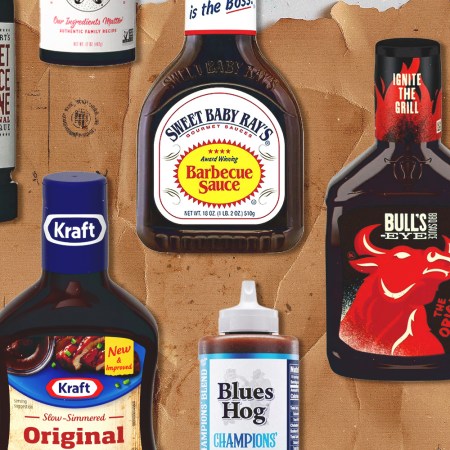I was talking to a fitness coach the other day, who mentioned that “something like 90% of people don’t get enough omega-3s.” I raised my eyebrows, surprised, and made a note to check the stat later in the day.
Well, Coach Matt, I shouldn’t have doubted you. According to a study published in BMJ Open back in 2022, 88.7% of American adults have “an Omega-3 Index in the high cardiovascular risk category.”
As for the other 11.3% — 10.4% are in the “intermediate risk category” and roughly 1% are in the “low risk” category. It might be easier to contextualize this figure through that final number. Only one in every 100 American adults is getting enough omega-3s to meaningfully protect their hearts.
The study found some other sobering figures, too: 95% of children and 68% of adults aren’t meeting the Dietary Guidelines for America’s recommended intake of 250 mg per day. Putting that brutal stat for the kids aside, it’s nice to see that over 30% of Americans are at least getting their daily intake of omega-3s. After all, omega-3s catalyze a variety of benefits in the body, from reducing inflammation to promoting brain health.
Still, very few American adults are getting enough omega-3s to secure those cardioprotective benefits. And considering the leading cause of death in the United States remains heart disease (it’s held the top spot since 1921, a perennial powerhouse), we can’t afford to be leaving this nutrient’s potential on the table.
Here’s what you need to know about omega-3s — and how to reliably fold them into your diet.
The Charge by InsideHook
A wellness newsletter to help you move better, think clearer and stay in the game longer. One email every Monday — we’re building habits, not chasing hacks.
Omega-3s, explained
The polyunsaturated fat chain was discovered in the 1920s by George and Mildred Burr, a husband-and-wife research team. Mr. Burr’s interest began when he noticed deficiency syndromes in lab rats… even though they were eating all of the era’s known vitamins.
This was the dawn of a new understanding amongst researchers: fats are critical for proper physiological function. You could sit and wonder how it took them so long to realize this, but here we are, a century later, and practically everyone you and I know still isn’t getting the healthy fats they need.
There are three types of long-chain omega-3s: eicosapentaenoic acid (EPA), docosahexaenoic acid (DHA) and alpha-linolenic acid (ALA). The first two are commonly found together in fish and fish oils. The third is typically found in plant sources, like flaxseeds and walnuts.
All sorts of benefits from omega-3s
When included consistently in one’s diet, omega-3s are basically a cudgel against cardiovascular disease. They lower triglyceride levels (not-so-great fats that rumble around the blood and narrow the arteries), improve the quality of lipoproteins and reduce the chronic inflammation that’s so often underlying heart issues. My favorite omega-3 superpower: they make your platelets less “sticky.” In other words, they reduce your risk of blood clots.
Omega-3s work wonders beyond the cardiovascular system, too, with well-established links to cognitive agility, memory and delayed senescence. (They’re also sneaky effective for eyesight.) As one study found: “Higher omega-3 index was associated with larger hippocampal volumes.” That’s science for: salmon builds your brain.
How to add omega-3s to your diet
Speaking of salmon — if you remember one thing here, remember this: omega-3s cannot be produced by the body. You’ve gotta get them from somewhere else. Here are the top sources to up your intake:
- Cold-water fatty fish: salmon, mackerel, sardines, tuna, herring, anchovies
- Fish oils: fish oil, krill oil, cod liver oil
- Plants and nuts: flaxseed, chia seeds, walnuts, soybeans, algae oil
Some thoughts here. First, I hope you like fish. That’s the single easiest way to hammer omega-3s. (My significant other and I actually stage a weekly Salmon Monday, which always gets the week humming on a healthy note.) I recommend taking a peek at all the tinned fish brands out there these days — there are so many, and they’re like little works of art. The industry has had a real revolution.
Have a Sockeye Salmon Summer With Vital Choice
The seafood subscription service is featuring a protein-packed catch in JuneAs for the oils, I’m reminded of a week I spent in Iceland, where the locals were throwing back shots of cod liver oil at eight in the morning. It’s nasty stuff, but kind of fun when you know it’s doing you good. Of course, you could also just invest in a supplement subscription. Momentous is pretty cool — their omega-3 soft gels feature 1600 mg of EPA and DHA, and source the nutrient from wild-caught small fish in Norway.
And one thing to note if you’re plant-based — the plant sources of omega-3s only include ALA, which your body has to convert into EPA and DHA (the forms that actually do the heavy lifting for your heart and brain). But the body is wildly inefficient at this, as less than 5% of the nutrients get converted.
Nuts and beans are incredibly beneficial for a host of other reasons. But don’t rely on them to meet your omega-3 needs. I would consider an algae oil supplement, like this or this. And something else to keep an eye on: Fatty15, a company that’s capsuled C15:0, a promising (and vegan) newcomer to the fatty acid conversation, which could improve cellular health. That said, the product is a bit pricey and more scientific research is needed before we crown it the next omega-3.
Final fatty thoughts
Not to pick on the beleaguered National Institutes of Health, but in researching this piece, I found a webpage where the NIH wrote: “Omega-3 deficiency is very rare in the United States.” That’s misleading, and, I think, hints at the core of the issue here.
“Deficiency” here refers to an actual debilitating medical condition. As in, you get so little omega-3s in your diet, you’re breaking out in scaly hives. (Actually.) But that’s really rare. What’s really common is American adults falling well short of the omega-3 levels they need to support their hearts and brains. And if you look at an adult’s health through the prism of potential heart disease…then, yes, 90 out of 100 of us are deficient.
Obviously, a solid cardioprotective routine is going to involve the usual suspects: regular exercise, an anti-sedentary mindset, a balanced diet. But add omega-3s to the mix, and they’ll punch well above their weight for a single daily habit.
The Charge will help you move better, think clearer and stay in the game longer. Subscribe to our wellness newsletter today.





















